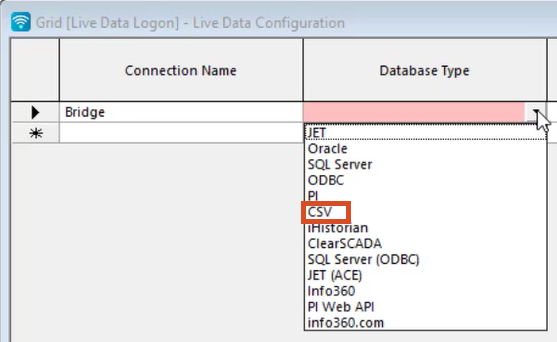& Construction

Integrated BIM tools, including Revit, AutoCAD, and Civil 3D
& Manufacturing

Professional CAD/CAM tools built on Inventor and AutoCAD
Setting up a live data configuration in InfoWorks WS Pro can sometimes be complicated, as the process can change, depending on the types of connections, and for what purpose.
Note: This example uses a relatively simple method involving a CSV database. This method would probably not be used in the real world, except for calibration purposes. However, it serves as an easily understandable example of the steps involved with connecting a live data configuration.

The Live Data Configuration now appears under the model group.
At the bottom of the window, there are several tabs, including Live Data Point, Zone, and Live Data Logon.

This is where you will tell the model where to look for the databases you want to connect to and enter any other relevant information.
It is best practice to work in the Live Data Logon tab first when connecting to a new database.
There are several live data connection options, including JET, Oracle, and SQL Server.

Note: If the database were in a different time zone than your own, then you would expand the drop-down under the Time Zone column and select the appropriate one. In this example, no time zone is selected.

All cells in the first row are now grayed out except for the cell under the Filename / Folder column, which is red. A red cell indicates that there is required data that is missing and will change depending on the type of database you choose. For example, if you set the database type as an SQL Server, several additional cells highlight in red. Generally, more complex database types require more information.
In this example, a notification appears to tell you the connection test was successful.
In the event of a failed connection test, the notification would list the causes, such as an incorrect username or insufficient permission.